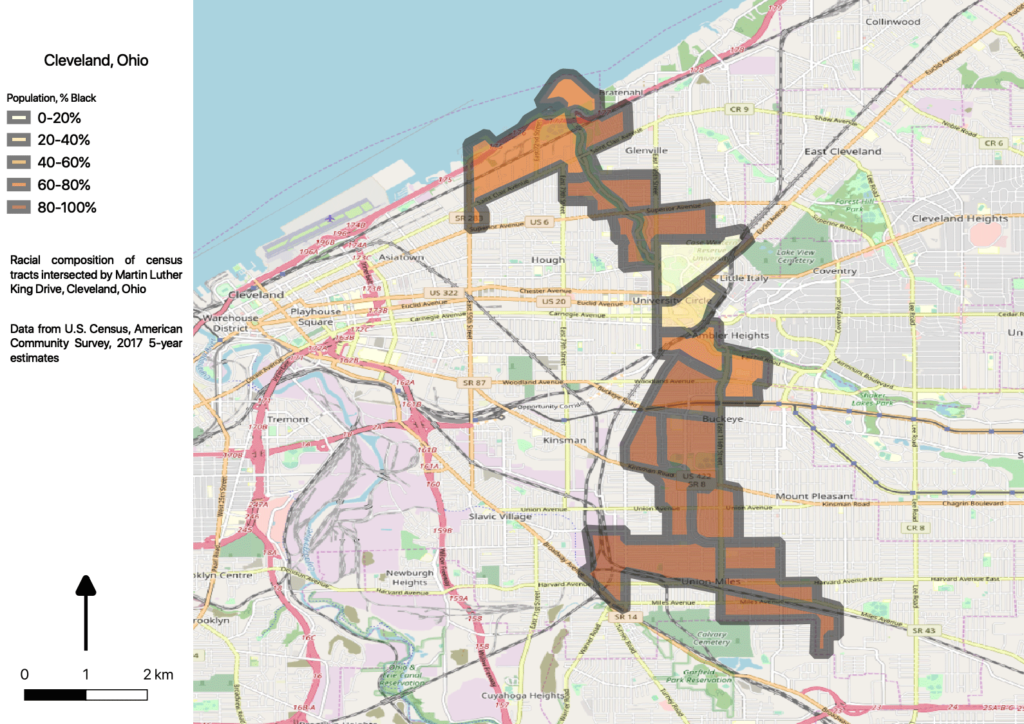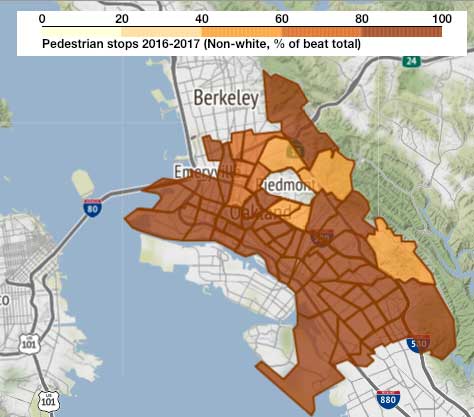The most obvious failure of policy is in those neighborhoods which are experiencing “displacement without development”: decreases in both population and income. 12 of the cities in the study fit this profile:
| Total population change, 2000-2017 | Population change, Blacks, 2000-2017 | Real median income change (2018 $), 2000-2017 | |
|---|---|---|---|
| Albuquerque, NM | -1,679 | -228 | -$528.43 |
| Bakersfield, CA | -412 | -988 | -$1,596.34 |
| Buffalo, NY | -2,702 | -2,623 | -$2,802.51 |
| Cleveland, OH | -7,680 | -8,266 | -$8,354.90 |
| Dallas, TX | -1,053 | -1,724 | -$2,034.28 |
| Hialeah, FL | -8,636 | -584 | -$4,721.96 |
| Jacksonville, FL | -6,350 | -736 | -$6,596.92 |
| Milwaukee, WI | -1,095 | -3,141 | -$7,041.22 |
| Newark, NJ | -822 | -2,590 | -$46.34 |
| Raleigh, NC | -1,749 | -3,665 | -$2,811.45 |
| Toledo, OH | -2,652 | 205 | -$13,002.87 |
| Tulsa, OK | -12,392 | -6,842 | -$6,258.19 |
Understanding the dynamics of these places would require more in-person research. It would probably be pretty depressing. These are likely areas where people continue to experience the disinvestment that has affected them for decades.
Here’s Cleveland, Ohio.
Cleveland has an unusually lengthy Martin Luther King, Jr. Drive, which intersects with 19 census tracts on the east side of the city. 17 of those tracts are over 60% Black; 14 are over 80% Black. The exceptions are along the waterfront, and near the metro lines and Case Western University in the middle of this map.
The area has lost over 7,500 residents (16.3%) since Y2K, and even more African-Americans, 20.5% of the Black population, though overall the area is still 83.5% Black. It is difficult to ascertain the reasons for the decline in population, but combined with the substantial decrease in median income (a loss of over $8,000, 28% of Y2K incomes), it seems the economic prospects in this area are very poor, so those with better opportunities elsewhere are leaving, and the prospects of those left behind continue to deteriorate.
It is also worth noting that Toledo, OH, which has the only neighborhood in this group which is gaining Black residents, is also the neighborhood with the greatest drop in median income. This is probably not coincidental.



